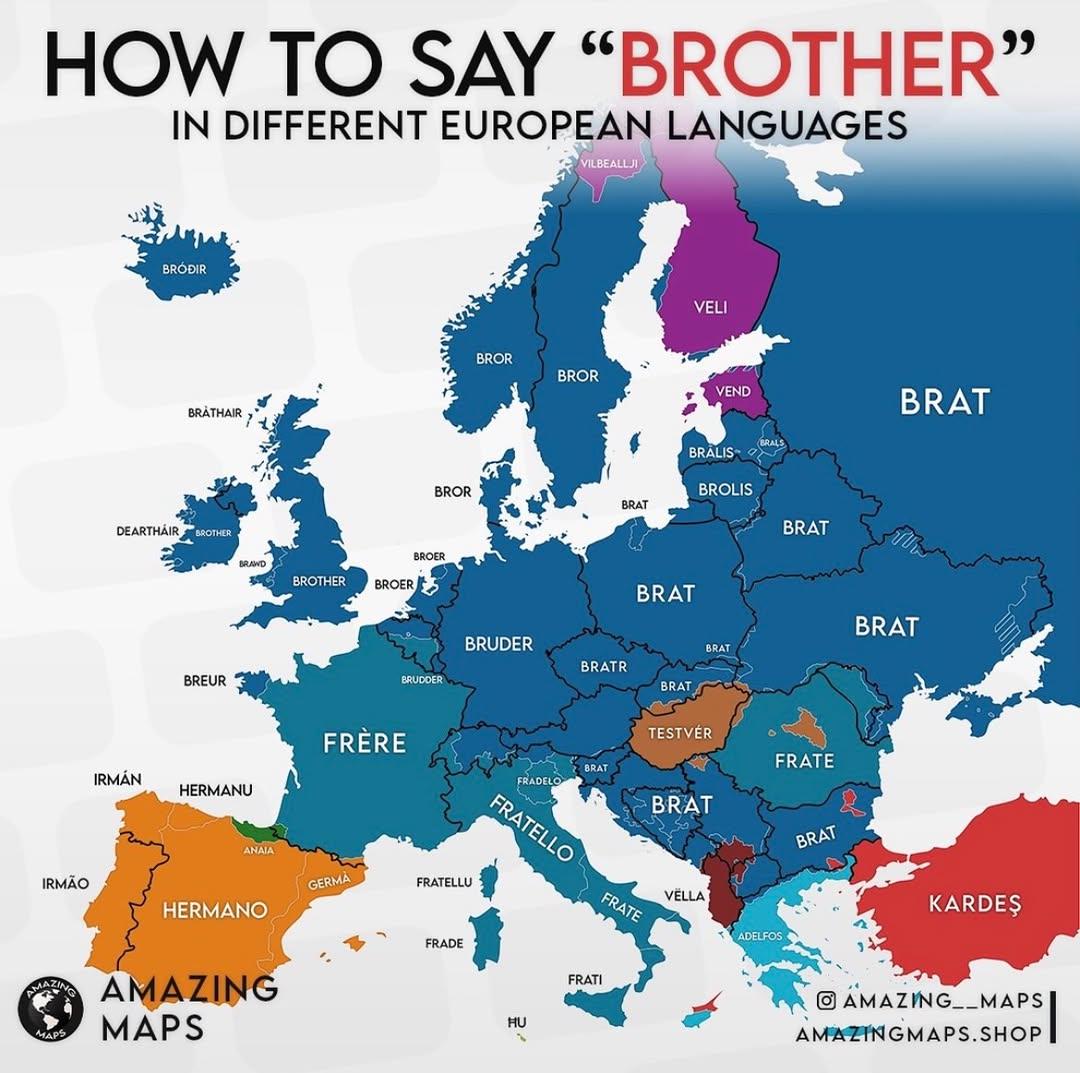Brother in Different European Languages Map


Marcus Rodriguez
Historical Geography Expert
Marcus Rodriguez specializes in historical cartography and geographic data analysis. With a background in both history and geography, he brings unique...
Geographic Analysis
What This Map Shows
This map visualizes how the word "brother" is translated into various languages across Europe. Each country is color-coded to represent the unique term used for this familial bond, providing a linguistic snapshot that showcases the diversity of languages spoken on the continent. Language is a powerful tool that not only helps us communicate but also encapsulates cultural nuances and historical ties. Understanding how a simple word like "brother" varies across languages can reveal deeper connections and distinctions among European cultures.
Deep Dive into Language and Family Terms
Language is a fascinating lens through which we can view human relationships, and the term "brother" is no exception. The word often signifies not just a sibling, but can also embody concepts of camaraderie, loyalty, and kinship across different cultures. In many languages, familial terms reflect social structures and values. For instance, in languages with a rich history, such as Greek and Latin, the word for brother carries connotations of shared heritage and duty.
Interestingly, in Slavic languages, the word for brother—like "brat" in Russian—often appears in various derivatives that express not just blood relations but also friendship and alliance. This mirrors the Slavic tradition of community and collective identity, where bonds extend beyond immediate family.
In contrast, languages like German and French use "Bruder" and "frère," respectively, which primarily refer to biological siblings but can also be used in informal contexts to denote close friends. This distinction highlights how language can adapt to social changes, reflecting a more modern interpretation of relationships. Meanwhile, in the Scandinavian languages, we see similar terms like "bror" in Swedish, which also signifies a close bond, but carries less of a weight in terms of obligation compared to its Slavic counterparts.
The map also reveals the influence of historical empires and migrations, which have shaped how familial terms evolved. For instance, in regions influenced by Latin, such as Spain and Italy, you find the words "hermano" and "fratello," respectively. These terms illustrate the lasting impact of the Roman Empire on European languages, showcasing how interconnected histories can influence contemporary vocabulary.
Regional Analysis
Let's break down the linguistic variations by region. In Southern Europe, particularly in the Romance-speaking countries, the terms for brother are often derived from Latin roots. In Spain, the term "hermano" not only denotes a brother but can also be used in a broader sense to refer to a close friend or comrade, echoing the social values of solidarity and support within communities. In Italy, "fratello" shares a similar versatility, often used in familial and friendly contexts alike.
Moving to Northern Europe, the Germanic languages present a slightly different picture. The German "Bruder" is straightforward, focused on biological relationships. However, in the Netherlands, the word "broer" also signals a camaraderie that transcends family ties. The Scandinavian languages, while closely related, have their unique terms but also exhibit a shared cultural understanding of fraternity and kinship.
Eastern Europe, particularly within the Slavic language group, showcases a rich tapestry of terms. In countries like Poland, the word "brat" is not just about blood relations; it’s often used in a broader sense to foster connections among peers. This reflects the communal values inherent in Slavic societies, where relationships are often built on mutual aid and support.
Significance and Impact
Understanding how the word "brother" translates across Europe is more than just a linguistic exercise; it reflects underlying cultural values and social structures. Language plays a crucial role in shaping our identities and how we connect with one another. The variations in terminology indicate not only familial connections but also broader themes of friendship, loyalty, and community.
Moreover, as globalization continues to blend cultures and languages, the nuances of these terms can shift. Have you noticed how language evolves with societal changes? The rise of digital communication and social media has fostered new kinds of relationships, which may influence how we perceive and express these familial terms in the future. As we witness these transformations, it’s crucial to appreciate the cultural heritage embedded in these words, reminding us of our shared humanity, regardless of the language we speak.
In conclusion, the straightforward term "brother" opens a window into the complex interplay of language, culture, and identity across Europe. It encourages us to explore deeper connections and appreciate the rich tapestry of human relationships that bind us all together, transcending borders and languages.
Visualization Details
- Published
- October 22, 2025
- Views
- 20
Comments
Loading comments...